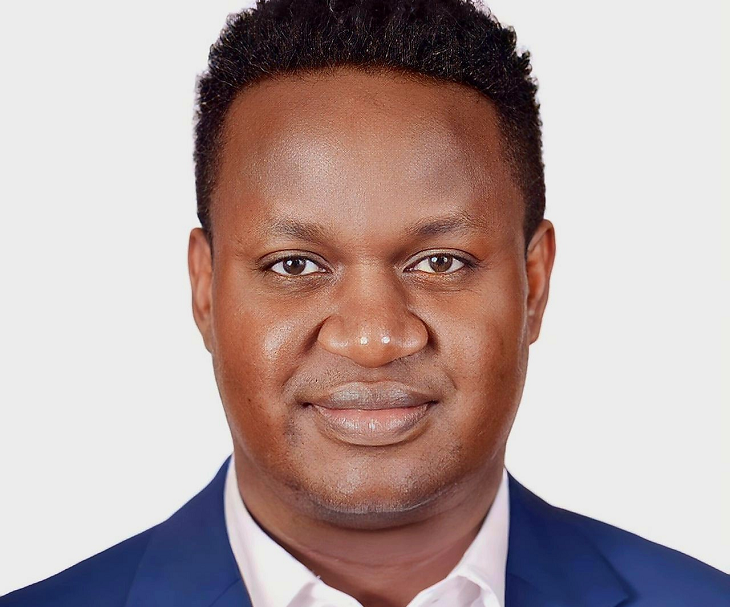Tanzania’s Energy Future Is Built On Stable Growth And Digital Innovation

Tanzania is entering a new energy era, and an exciting one at that. With the full commissioning of the Julius Nyerere Hydropower Project (JNHPP) in early 2025, Tanzania’s energy landscape is set to undergo a dramatic transformation.
The 2,115MW facility, situated on the Rufiji River, within the Selous Game Reserve, is one of the largest hydropower plants in sub-Saharan Africa and boosts the country’s installed capacity to over 4,000MW.
With all nine turbines operational, each generating 235 megawatts, Tanzania has undoubtedly taken an all-important step towards energy self-sufficiency and grid reliability, and importantly, the delivery of affordable energy for both households and businesses.
The New Energy landscape
Before the JNHPP plant went live, Tanzania had, according to the Energy and Water Utilities Regulatory Authority (EWURA), a total installed capacity of 2,411.33MW, of which 2,372.96MW came from the national grid and 38.37MW from off-grid systems.
Now, with the addition of the JNHPP’s energy generation, Tanzania is creating opportunities to expand access, lower costs, and accelerate electrification. In fact, JNHPP allows the national utility, TANESCO (Tanzania Electric Supply Company Limited), to reduce reliance on expensive, carbon-intensive diesel generation, improving voltage stability and reducing outages.
However, and this is important to note, off-grid systems like microgrids will remain critical in bridging the access gap, particularly for remote communities.
Integrating advanced, digital tools
Generation, like most countries across the world, is only one part of the energy equation. In order for Tanzania to truly harness its new capacity, its transmission and distribution must be up to the task.
Currently, the country’s transmission network spans 7,524km of lines and 67 substations, while distribution networks extend across 188,266km, mostly operated by TANESCO.
It is here where digitisation can become an invaluable tool in optimising Tanzania’s transmission and distribution networks. For one, Advanced Distribution Management System (ADMS) can provide utilities with real-time monitoring, automated outage management, and optimisation tools.
ADMS integrates SCADA (Supervisory Control and Data Acquisition, DMS (Distribution Management Systems), and OMS (Outage Management System) into a single platform and can help Tanzania’s utilities modernise operations, improve grid flexibility, and prepare for the integration of distributed energy resources (DERs).
Modernising a sustainable infrastructure
It is also important that Tanzania continues to strengthen its sustainability efforts and resultant steps toward net zero with greener energy infrastructure. Here, solutions like Schneider Electric’s AirSeT series SF6-free medium voltage switchgear, along with automation and grid optimisation solutions, create cleaner, more resilient power systems.
And coupled with microgrids, these technologies can enhance resilience for industries, data centres, and essential services, while ensuring communities remain powered even in times of grid instability.
Communities’ access to energy
Tanzania’s enhanced energy infrastructures should also extend to include human development. Initiatives like Schneider Electric’s Access to Energy Programmes support individual, domestic, and community electrification through solutions like Mobiya (individual solar lamps), Homaya (domestic systems), and Villaya (collective microgrids).
Mobiya Solar Lamps are:
- Portable, affordable, and durable, and provide clean lighting for individuals in off-grid settings.
- Ideal for students, vendors, and mobile workers, they replace kerosene lamps and candles, reducing health risks and fire hazards.
- Rechargeable via solar panels, they support night-time productivity, safety, and education.
Homaya Solar Home Systems:
- Designed for rural households, Homaya systems combine solar panels, in-built batteries, and multiple lighting points.
- They power basic appliances (fans, radios, TVs) and support both AC and DC loads, adapting to local energy needs.
- Homaya enables energy independence, reducing reliance on unreliable or expensive grid extensions.
Villaya Microgrids:
- Villaya solutions are pre-configured solar microgrids that serve entire communities, schools, clinics, or agricultural hubs.
- They integrate smart monitoring, pre-payment systems, and load management, ensuring sustainability and accountability.
- Villaya supports productive use of energy—from water pumping to refrigeration—boosting livelihoods and local economies.
Indeed, by coupling energy with education and entrepreneurship, these initiatives are helping underserved communities in Tanzania move towards greater social and economic inclusion.
Ultimately, Tanzania’s energy sector is making positive strides, with a clear trajectory towards greater capacity, reliability, and sustainability.
Read Also: Tanzania Is The Rot Killing The East African Dream
About Soko Directory Team
Soko Directory is a Financial and Markets digital portal that tracks brands, listed firms on the NSE, SMEs and trend setters in the markets eco-system.Find us on Facebook: facebook.com/SokoDirectory and on Twitter: twitter.com/SokoDirectory
- January 2025 (119)
- February 2025 (191)
- March 2025 (212)
- April 2025 (193)
- May 2025 (161)
- June 2025 (157)
- July 2025 (226)
- August 2025 (211)
- September 2025 (270)
- October 2025 (271)
- January 2024 (238)
- February 2024 (227)
- March 2024 (190)
- April 2024 (133)
- May 2024 (157)
- June 2024 (145)
- July 2024 (136)
- August 2024 (154)
- September 2024 (212)
- October 2024 (255)
- November 2024 (196)
- December 2024 (143)
- January 2023 (182)
- February 2023 (203)
- March 2023 (322)
- April 2023 (297)
- May 2023 (267)
- June 2023 (214)
- July 2023 (212)
- August 2023 (257)
- September 2023 (237)
- October 2023 (264)
- November 2023 (286)
- December 2023 (177)
- January 2022 (293)
- February 2022 (329)
- March 2022 (358)
- April 2022 (292)
- May 2022 (271)
- June 2022 (232)
- July 2022 (278)
- August 2022 (253)
- September 2022 (246)
- October 2022 (196)
- November 2022 (232)
- December 2022 (167)
- January 2021 (182)
- February 2021 (227)
- March 2021 (325)
- April 2021 (259)
- May 2021 (285)
- June 2021 (272)
- July 2021 (277)
- August 2021 (232)
- September 2021 (271)
- October 2021 (304)
- November 2021 (364)
- December 2021 (249)
- January 2020 (272)
- February 2020 (310)
- March 2020 (390)
- April 2020 (321)
- May 2020 (335)
- June 2020 (327)
- July 2020 (333)
- August 2020 (276)
- September 2020 (214)
- October 2020 (233)
- November 2020 (242)
- December 2020 (187)
- January 2019 (251)
- February 2019 (215)
- March 2019 (283)
- April 2019 (254)
- May 2019 (269)
- June 2019 (249)
- July 2019 (335)
- August 2019 (293)
- September 2019 (306)
- October 2019 (313)
- November 2019 (362)
- December 2019 (318)
- January 2018 (291)
- February 2018 (213)
- March 2018 (275)
- April 2018 (223)
- May 2018 (235)
- June 2018 (176)
- July 2018 (256)
- August 2018 (247)
- September 2018 (255)
- October 2018 (282)
- November 2018 (282)
- December 2018 (184)
- January 2017 (183)
- February 2017 (194)
- March 2017 (207)
- April 2017 (104)
- May 2017 (169)
- June 2017 (205)
- July 2017 (189)
- August 2017 (195)
- September 2017 (186)
- October 2017 (235)
- November 2017 (253)
- December 2017 (266)
- January 2016 (164)
- February 2016 (165)
- March 2016 (189)
- April 2016 (143)
- May 2016 (245)
- June 2016 (182)
- July 2016 (271)
- August 2016 (247)
- September 2016 (233)
- October 2016 (191)
- November 2016 (243)
- December 2016 (153)
- January 2015 (1)
- February 2015 (4)
- March 2015 (164)
- April 2015 (107)
- May 2015 (116)
- June 2015 (119)
- July 2015 (145)
- August 2015 (157)
- September 2015 (186)
- October 2015 (169)
- November 2015 (173)
- December 2015 (205)
- March 2014 (2)
- March 2013 (10)
- June 2013 (1)
- March 2012 (7)
- April 2012 (15)
- May 2012 (1)
- July 2012 (1)
- August 2012 (4)
- October 2012 (2)
- November 2012 (2)
- December 2012 (1)


